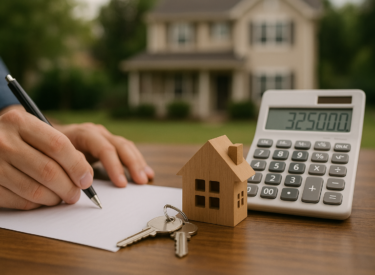It's no secret that Australians are now valuing sustainable, energy-efficient homes not just for environmental reasons but as a smart way to save money.
With the cost of living pressures escalating, incorporating energy-efficient features into homes is becoming a financially savvy strategy.
This trend is especially relevant as high utility bills are increasingly stretching household budgets for both buyers and renters.
In fact, according to PropTrack Origin Australian Home Energy Report, a significant 59% of respondents consider energy efficiency ratings crucial when buying, renting, or building a home.

Karen Dellow, Senior Audience Analyst at PropTrack said:
"Renters, in particular, are honing in on energy efficiency.
With median weekly rents at record highs, they're more sensitive to unexpected bill spikes than buyers.
This financial vigilance heavily influences their housing choices."

Australia’s preferred energy-efficient features
According to the report, solar power emerges as the top choice among both buyers and renters.
An impressive 85% of buyers and 67% of renters in the Residential Audience Pulse Survey expressed a strong preference for solar panel installations.

Echoing this, Origin’s survey finds that 59% of homeowners have already installed solar panels, a number significantly higher than the 12% of renters in solar-powered homes.
Meanwhile, older Australians, especially those over 65, and rural residents show a higher likelihood of adopting solar power.
While solar panels are a hot commodity, it’s worth noting the unique position of renters, who depend on property owners to make such installations.
Energy-efficient lighting and appliances are also critical, particularly for renters.
These upgrades offer a practical, low-cost way to enhance energy efficiency and can be easily moved to future rental properties.
One in four renters now owns smart appliances, a trend that speaks to their desire for both convenience and energy efficiency.
What are buyers willing to pay extra for?
The report highlights that while recognizing the value of energy-efficient features, there’s a notable hesitation among many to pay a premium for them.
Solar panels are an exception, with 12% of survey participants willing to pay at least 5% more for a property equipped with them.

However, less enthusiasm is shown for properties with electric vehicle chargers, suggesting that EV adoption is still not a major factor in property valuation for most.
The cost factor in adopting energy-efficient technologies
Over 3 million Australian homes now boast solar panels, and this trend is on an upswing.
Homeowners are increasingly interested in insulation, double-glazed windows, and water tanks.
However, cost remains a barrier to wider adoption of such features.
Ms Dellow commented:
"As prices for solar, batteries, and electric vehicles become more accessible, we can expect a spike in their adoption.
Interestingly, the rise of smart appliances is proving particularly beneficial for renters, who are eager to embrace energy efficiency in homes they don’t own.
The next big thing in home energy efficiency is home automation systems.
These systems aren't just about convenience; they're about intelligently managing every aspect of a home's energy use, from lighting to security.
This evolution points towards a future where sustainable living is not just a choice but a seamless part of our everyday lives."














